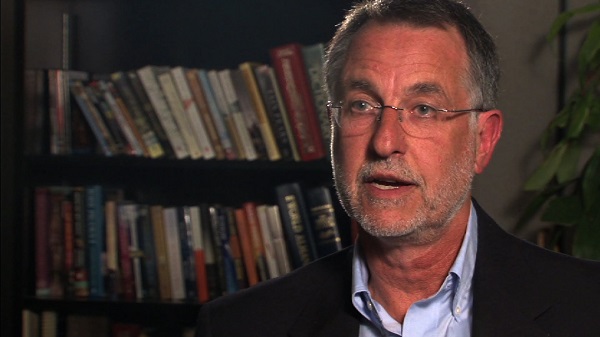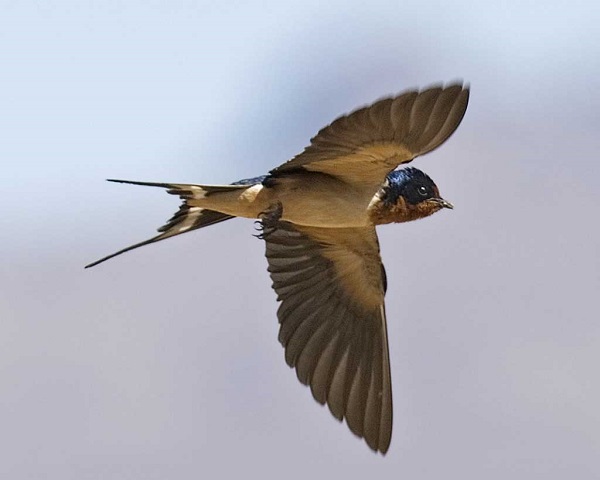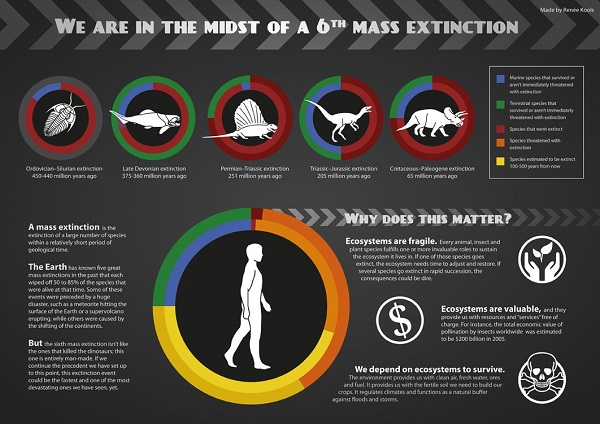Sixth Mass-Extinction Event: The Era Of ‘Biological Annihilation’ Looming Nearby In The Horizon, Says A New Study
- Scientists have said it’s clear that the Earth is entering its sixth mass-extinction event.
- In this session, we will learn about the possible sixth mass-extinction event looming on the nearby horizon.
Scientists On The Nearing Mass-Extinction Event
Many scientists say it is very much clear that our home planet is entering its sixth mass-extinction event, which means that almost three-quarters of all the currently extant species could disappear in the coming centuries.
And that is terrifying, especially since humans are one of the major contributing factors to this shift.
New Study Regarding The Matter
But according to a study published Monday in the Proceedings of the National Academy of Sciences, that is not even the full picture of the “biological annihilation” humans are inflicting upon the natural world.
Gerardo Ceballos, an ecology professor at the Universidad Nacional Autónoma de México, and his co-authors cite new evidence that populations of some species we thought were common are suffering in numerous unseen ways.

“What is at stake is really the state of humanity,”
Gerardo Ceballos told CNN.
Findings Of The Study
As per the study, nearly 1/3 of the 27,600 land-based mammals, birds, amphibians, and reptile species studied are shrinking in terms of their numbers and territorial range. The researchers dubbed it an “extremely high degree of population decay.”
The research scientists also looked at a well-documented group of 177 mammal species. They found that all of those species had lost at least 30% of their territory between 1900 and 2015.
Likewise, more than 40% of those species “experienced severe population declines,” meaning they lost at least 80% of their geographic range during that same time period.

As per the authors, looking at the extinction crisis in terms of species whose populations and ranges are shrinking also helps in showing that the “Earth’s sixth mass extinction is more severe” than previously thought. The authors also say that a major extinction event is already “ongoing.”
Comments On The Study
Anthony Barnosky, an executive director of the Jasper Ridge Biological Preserve at Stanford University said,
“It’s the most comprehensive study of this sort to date that I’m aware of,”
However, he was not involved in the study.
Adding,
“We’ve got this stuff going on that we can’t really see because we’re not constantly counting numbers of individuals.
But when you realize that we’ve wiped out 50% of the Earth’s wildlife in the last 40 years, it doesn’t take complicated math to figure out that, if we keep cutting by half every 40 years, pretty soon there’s going to be nothing left.”

The new paper’s analysis risks overstating the degree to which extinction events already are occurring, Stuart Pimm, chair of conservation ecology at Duke University in North Carolina said.
Likewise, he also said that the research methodology does not have the level of granularity needed to be particularly useful for conservationists.
Examples Cited In The Study
This research study shows that almost entire populations of other flora and fauna are crashing, even if they’re not yet on the brink of extinction yet. It’s only that some of these are well-known. For example, the African elephant.

“On the one hand, you can say, ‘All right, we still have around 400,000 elephants in Africa, and that seems like a really big number,'”
Barnosky said, adding,
“But then, if you step back, that’s cut by more than half of what their populations were in the early part of last century. There were well over 1 million elephants (then). And if you look at what’s happened in the last decade, we have been culling their numbers so fast that if we kept up with that pace, there would be no more wild elephants in Africa in 20 years.”

Currently, scientists speculate that the species are going extinct at roughly 100 times what would be considered normal, and even perhaps considerably more.
You may also like to read Does Ghost Exist? Is There Any Empirical And Scientific Proof Of Their Existence? And What Science Has To Say On That Matter?
Dispute On The Sixth Mass Extinction
There has been some dispute lately about whether the Earth’s sixth mass extinction event already has begun or is simply looming on the horizon.
But, there is very little disagreement among scientists that humans are driving an unprecedented ecological crisis.

People are burning fossil fuels, contributing to climate change. They’re chopping down forests for agriculture, and the global population of people continues to rise. Meanwhile, the poachers are driving organisms with valuable body parts to disturbing low levels.
All of this is contributing to a very rapid decline in the number of wild creatures, both on land and in the ocean.
Implication Of The Study
Gerardo Ceballos’ paper highlights the urgency of this crisis and the need for change.
“The good news is, we still have time,”
he said.
“These results show it is time to act. The window of opportunity is small, but we can still do something to save species and populations.”
Otherwise, the “biological annihilation” continues on.
Article Courtesy: CNN

